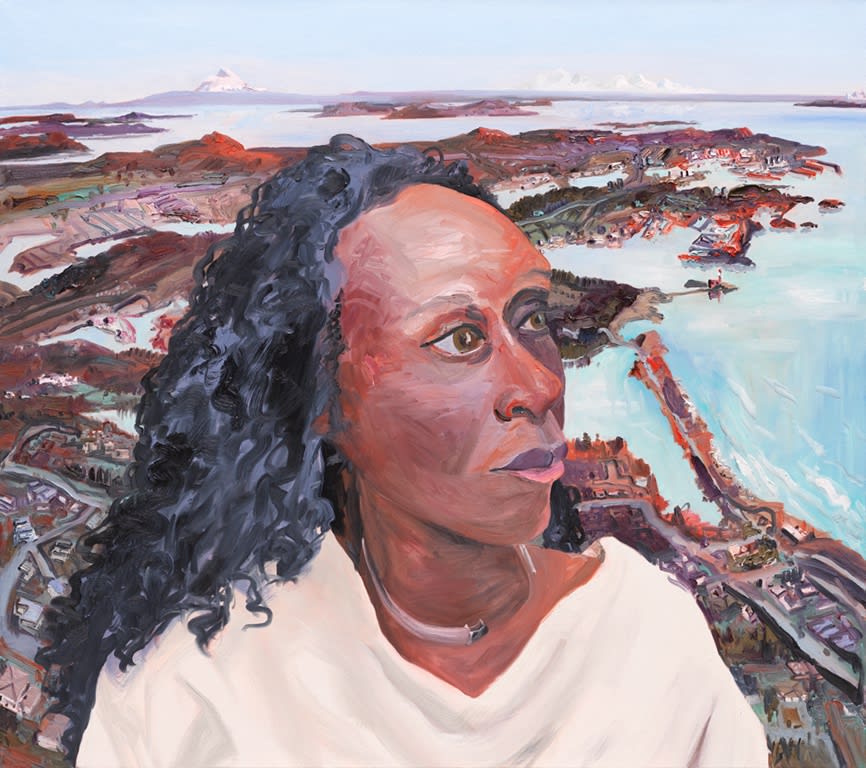Opening Reception: Thursday, November 8, 6-8pm
In Discussion with John Hartman and Ian Brown: Saturday, November 17th, 1:30 PM
Nicholas Metivier Gallery is pleased to announce People and Place, an exhibition of paintings and pastels by John Hartman. The exhibition will open on November 8th and run until December 8th with an opening reception on November 8th. A discussion with John Hartman and Ian Brown will take place on Saturday, November 17th at 1:30 PM.
John Hartman is one of Canada’s preeminent painters, renowned for his gestural and impasto depictions of some the country’s most iconic landscapes including Georgian Bay, Ontario. While Hartman has received national acclaim for his series including Big North and CITIES, lesser known are his portraits, a genre he has engaged with throughout his career. The notion that people and landscape are inextricable from one another has always been a dominant theme in Hartman’s work.
This exhibition debuts an ambitious and groundbreaking new project by Hartman. Over the last four years, he has been painting Canadian authors situated above their “home landscape”. As Hartman defines it, one’s home landscape is not necessarily where they are born but the place they are most influenced by. Participating authors in the project include Ian Brown, David Adams Richards, Esi Edugyan, Lisa Moore, Linden MacIntyre, Kathleen Winter and Thomas King. In contrast to his early paintings where the landscape dominated the canvas and small figurative vignettes populated the sky, here the authors are larger than life and in the foreground. Hartman paints with a raw and expressionistic style that aims to capture an aspect of the subject’s soul. His thick brushstrokes highlight the contours of the authors faces and echo the topography of the landscape in the background.
In addition to the portraits are paintings and pastels of landscapes that are based on or around the locations that Hartman visited for the project. While Hartman has captured many urban and remote places in Canada over the course of his career, this series introduces new regions to Hartman’s work including the Okanagan Valley and Tofino in British Columbia and Cape Breton in Nova Scotia.
A special component to the exhibition is a selection of Hartman’s early portrait paintings completed between 1987 and 2002. This is the first time these portraits have been exhibited. The portraits are of Hartman’s mentors and friends including members of a First Nations community in Collins, Ontario where Hartman lived with his family in the early eighties. Collins is the subject of many of Hartman’s seminal early drypoint etchings and paintings. In the context of his Canadian author paintings, these early portraits show the evolution and importance of portraiture in Hartman’s work.
From his earliest years as an artist, Hartman has been drawn to the (extremely complicated, extremely difficult) discipline of portraiture, and it is this fascination that has brought him, almost inevitably, to the subject of writers. Hartman is a reader, for one thing. But, for another, writers are cut from the same cloth as Hartman in many ways. They are observant. They are more comfortable with individuals than they are with generalizations. They do not imagine that time is a simple sequence. And they see landscapes – whether the Miramachi River in New Brunswick or MacLaughlin Point in British Columbia – as places where stories are kept. The same can be said of a face. It’s a history. It’s a revelation. It’s a map.
– David Macfarlane
John Hartman has exhibited extensively in Canada as well as in New York, New Orleans and London, England. His work was the subject of two widely acclaimed travelling museum exhibitions, CITIES (2007-2010) and Big North (1999-2001). In 2008, Hartman’s drypoint etchings were shown alongside those by David Milne in the exhibition, Invention and Revival at the Carleton University Art Gallery. Most recently in 2017, Hartman’s mountain paintings, The Great Divide Traverse, were exhibited at the Whyte Museum of the Canadian Rockies. Collections include the Art Gallery of Ontario, Toronto, the New Orleans Museum of Art, New Orleans and the Art Gallery of Nova Scotia, Halifax.

